Study Food Systems Outside at UM’s PEAS Farm
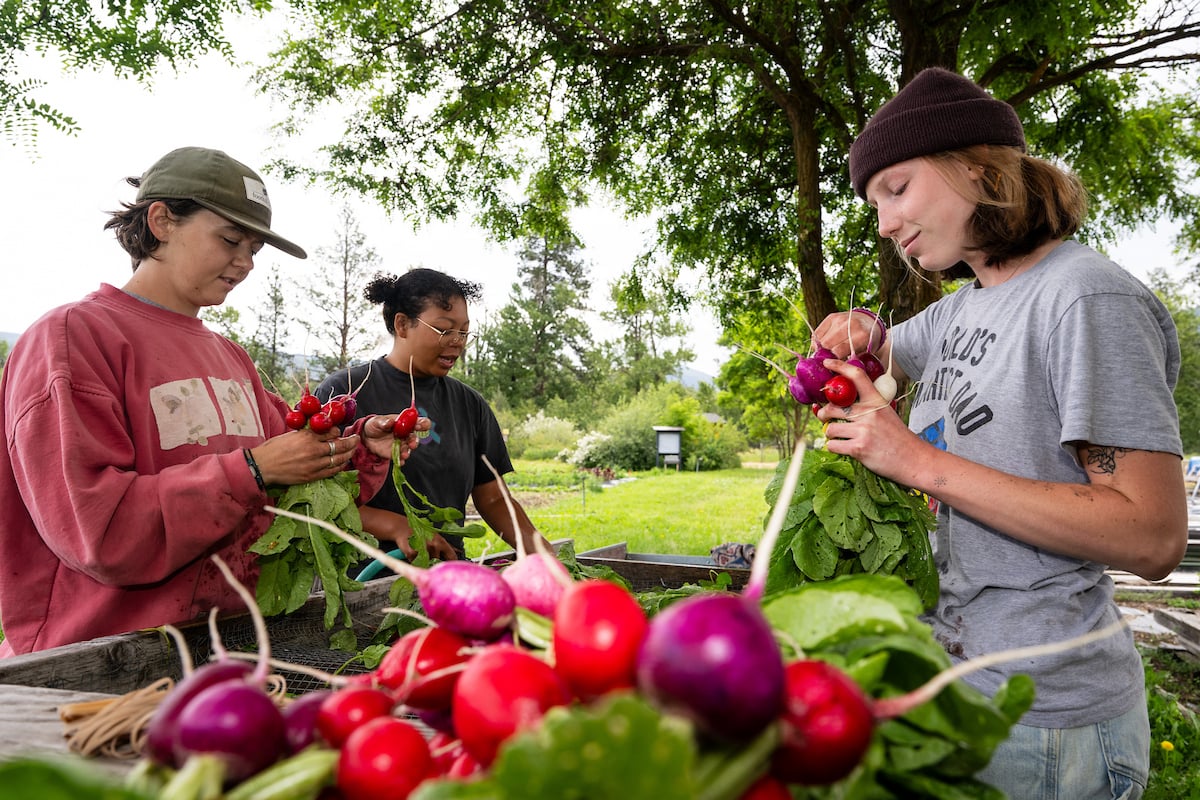
The University of Montana PEAS Farm is a 10-acre living, learning study site operated by the local, non-profit Garden City Harvest in partnership with the University’s acclaimed Environmental Studies Program. Associate Professor and chair of Environment Studies, Robin Saha, calls the PEAS Farm a “communiversity” – and encourages you to be a part of it!
The farm, located north of campus near the Rattlesnake National Recreation Area, is a unique learning space for students, with practicum courses taught by PEAS farm lecturer, Caroline Stephens. And she’s more than happy to guide you on how you can get outside, get involved, and deepen your knowledge of food production, food systems and the joy of growing food in community.
Scroll on to learn more about classes, opportunities and ways to get your hands in the dirt!
Meet Caroline Stephens, PEAS Farm Lecturer
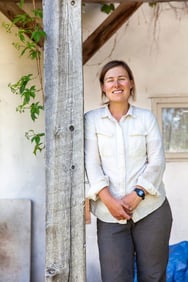 Caroline Stephens has worked as a lecturer at PEAS Farm since 2019 and loves guiding students through hands-on education in food systems, which aligns with the lessons and theories taught in UM classrooms. Farm-based practicum courses take an interdisciplinary approach, with lessons in ecology, biology, food justice, business and ethics.
Caroline Stephens has worked as a lecturer at PEAS Farm since 2019 and loves guiding students through hands-on education in food systems, which aligns with the lessons and theories taught in UM classrooms. Farm-based practicum courses take an interdisciplinary approach, with lessons in ecology, biology, food justice, business and ethics.
Caroline thinks students should get involved with the PEAS Farm because it’s a valuable way to study and apply rich, abstract ideas in the real context of a farm. Students passionate about sustainability or conservation can challenge, critique and solidify their values around human relationships with land through the world of agriculture.
How the PEAS Farm Impacts Our Community
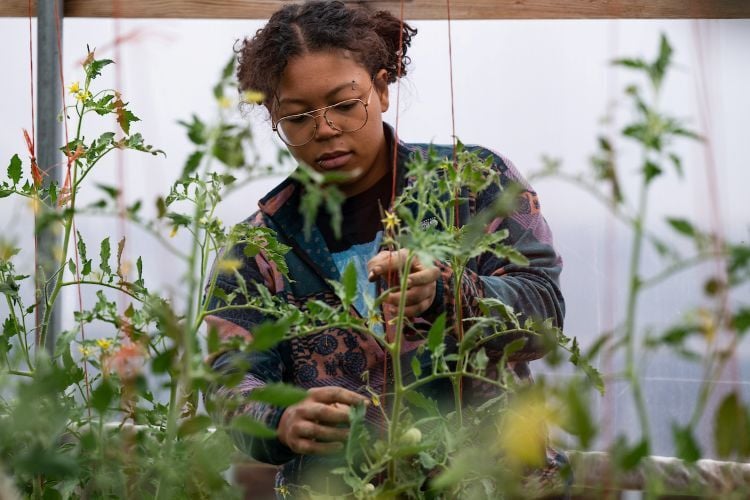
The PEAS Farm grows thousands of pounds of fruits and vegetables every year. Approximately 15,000 pounds are donated to the Missoula Food Bank, which serves low-income families and several community organizations. Approximately 2,000 pounds go to the UM Food Pantry, and another 6,000 pounds are grown for a mobile market that provides food access to low-income seniors in Missoula.
Read More: Your Guide to the UM Food Pantry
Stephens says that one reason the PEAS Farm is so important is that humans need each other to thrive, and the farm is a place where students can build collaboration and communication skills with each other and the community at large.
The PEAS Farm also supports approximately 110 summer CSA shares, delivering veggies weekly to anyone interested in eating fresh and local. Want to Learn More About PEAS Farm CSA – check out the details yourself!
What PEAS Farm Classes Can I Take?
Students can take PEAS Farm practicum courses from Caroline in fall, spring and summer, with each course having different learning outcomes based on the seasons:
Summer PEAS Practicum – ENST 495/595 – Six Credits
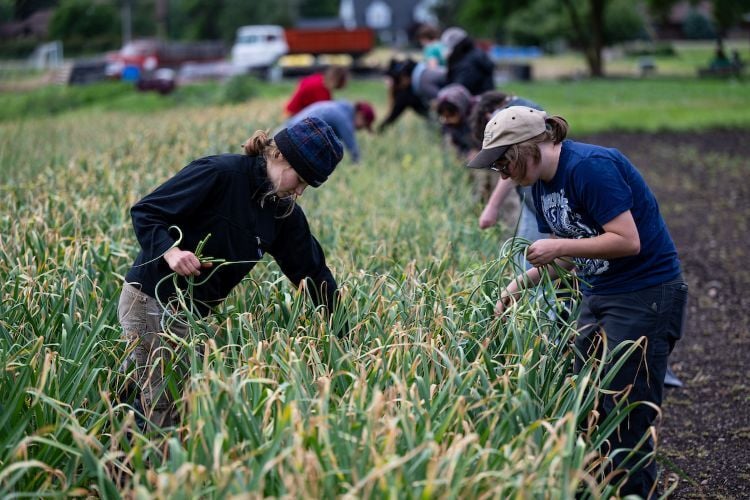
The Summer PEAS Practicum is the heart of the PEAS program, spanning 12 weeks from mid-May through mid-August. Students dedicate 20 hours per week, learning to grow food for the larger community and growing their own tight-knit community with other students in their cohort.
Summer lessons range from soil health to irrigation, pest management and crop management. Supporting this learning is a focus on building resilient, equitable, and relational food systems. Over a dozen field trips to local farms and food producers are also central to the curriculum, offering different perspectives on agriculture and food systems, as well as integral networking opportunities.
Spring & Fall PEAS Internships – ENST 495/595 – Two Credits
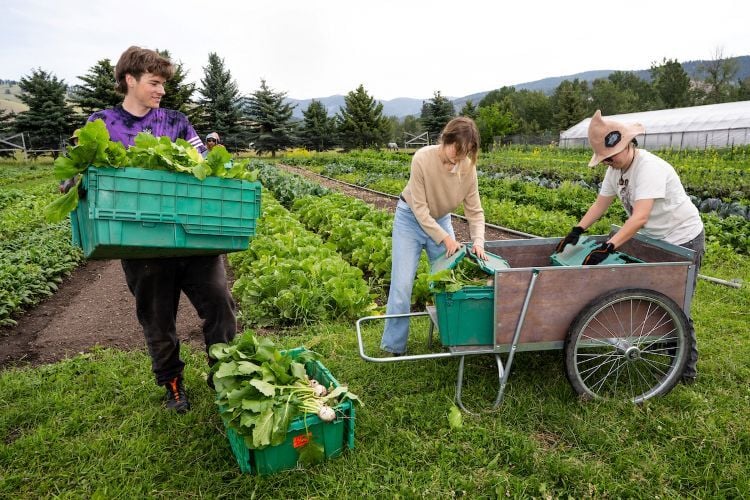
PEAS Farm also offers separate internships in the spring and fall, each spanning eight weeks and requiring approximately seven hours per week. Students choose between one of four field sections for either season (time slots to work outside at the Farm), and every student convenes at the Farm on Wednesdays for a formal lecture.
Students in the spring internship begin in the greenhouse in March and study several topics, including cultivar selection, seed sourcing, germination, field planning and soil preparation. Spring students plant the garden and also learn about tending to perennial plants, with a particular focus on pruning and holistic orchard management.
During the fall internship, students bring in the harvest, supplying the CSA program and contributing pounds upon pounds of donations to the Missoula Food Bank, as well as contributions to the Five Valleys Seed Library. Learning topics include harvest and washing techniques, curing and storage, cover cropping, soil management, and seed saving.
Practicum in Sustainable Agriculture Education – ENST 494 – Two Credits
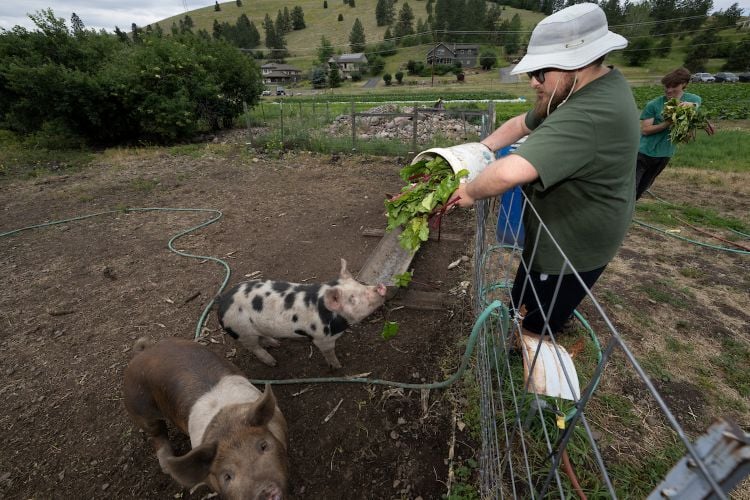
During the fall semester, ESP alum Jason Mandala teaches the Practicum in Sustainable Agriculture Education. This two-credit course prepares activities and teaches students how to lead and instruct school-age youth about food and farming at PEAS Farm.
Students in the practicum lead two field trips each week for elementary school students who visit the farm, teaching lessons focused on the social, scientific and nutritional components of sustainable agriculture and the food system. This class is available to anyone, but some PEAS Farm experience is appreciated.
What Would My PEAS Farm Experience Look Like?
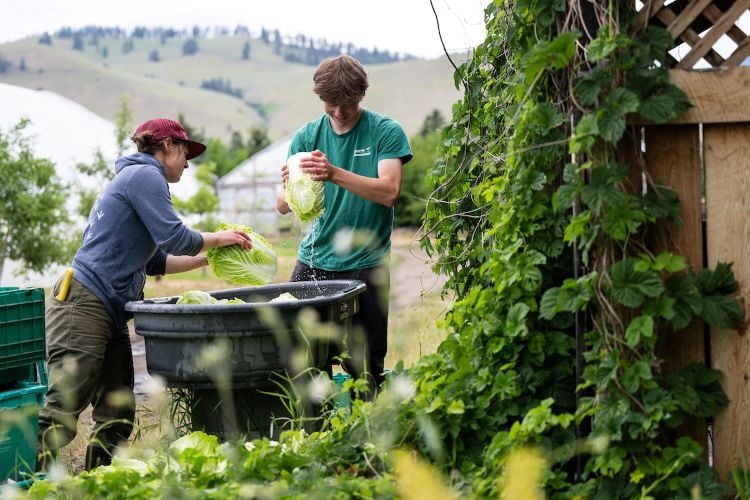
Here's the classroom environment: ten acres of vegetables, orchards, animals, a greenhouse and more. If you take the summer practicum, you will work through the morning and share a meal at lunch. During the summer program, students take a field trip every Friday to a local farm or ranch. Speakers and experts are part of every semester’s experience as well.
One example of hands-on learning that students participate in is the Four Sisters’ Garden, which demonstrates Indigenous farming and planting techniques, as well as native plant landscaping. At the PEAS Farm, students learn a range of skills related to sustainable agriculture.
Why Should You Take the PEAS Farm Class?
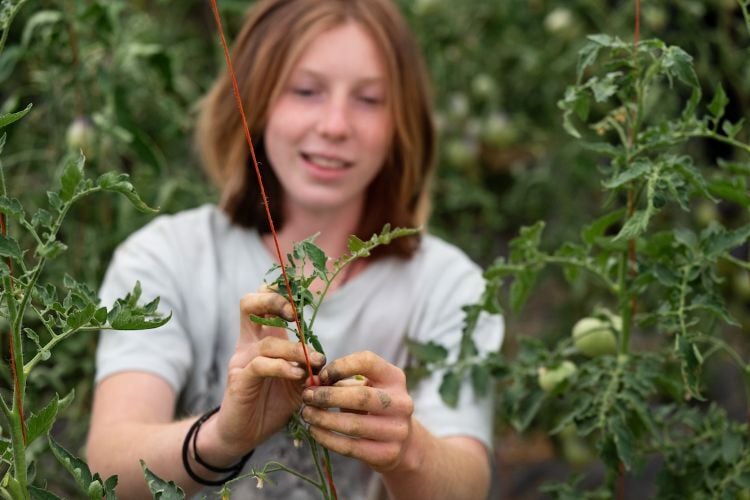
Stephens emphasizes that engaging with the community in various ways is a great way for students to reinforce their learning. A big benefit of the farm is that students are outside, moving their bodies, talking to one another, solving problems together, building important life and career skills, and learning how to collaborate and communicate with others, as well as networking in Missoula’s local food system.
Resources You Should Check Out
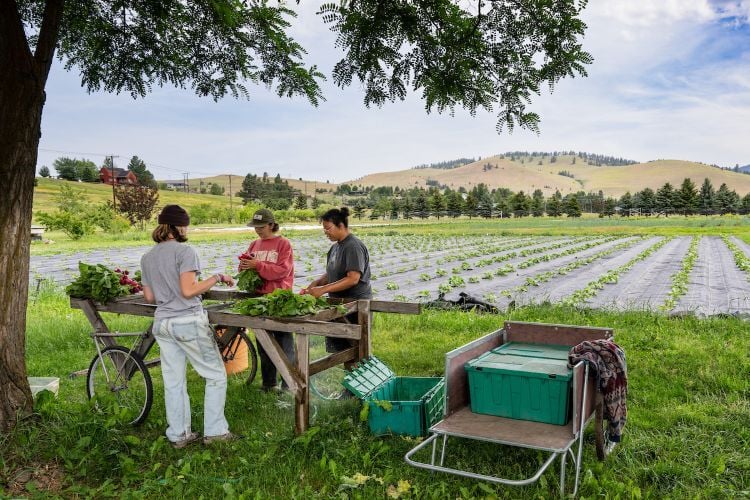
Be sure to follow the PEAS Farm’s Instagram and head on over to the Garden City Harvest website to learn more about the PEAS Farm. You can also check out events at the farm and other farms, and all of the other sustainable agriculture goings-on in Missoula!
 Anna Weishaar graduated from the University of Montana in 2018 with a degree in Creative Writing. She currently works as the Marketing Coordinator for the MCEE department. She enjoys walking her dogs around campus and finding healthy options for lunch in the UC Market, and going to events offered by UM to learn something new. She would like to give special thanks to Professor Robin Saha and PEAS Farm Lecturer Caroline Stephens for their help in creating this blog.
Anna Weishaar graduated from the University of Montana in 2018 with a degree in Creative Writing. She currently works as the Marketing Coordinator for the MCEE department. She enjoys walking her dogs around campus and finding healthy options for lunch in the UC Market, and going to events offered by UM to learn something new. She would like to give special thanks to Professor Robin Saha and PEAS Farm Lecturer Caroline Stephens for their help in creating this blog.




